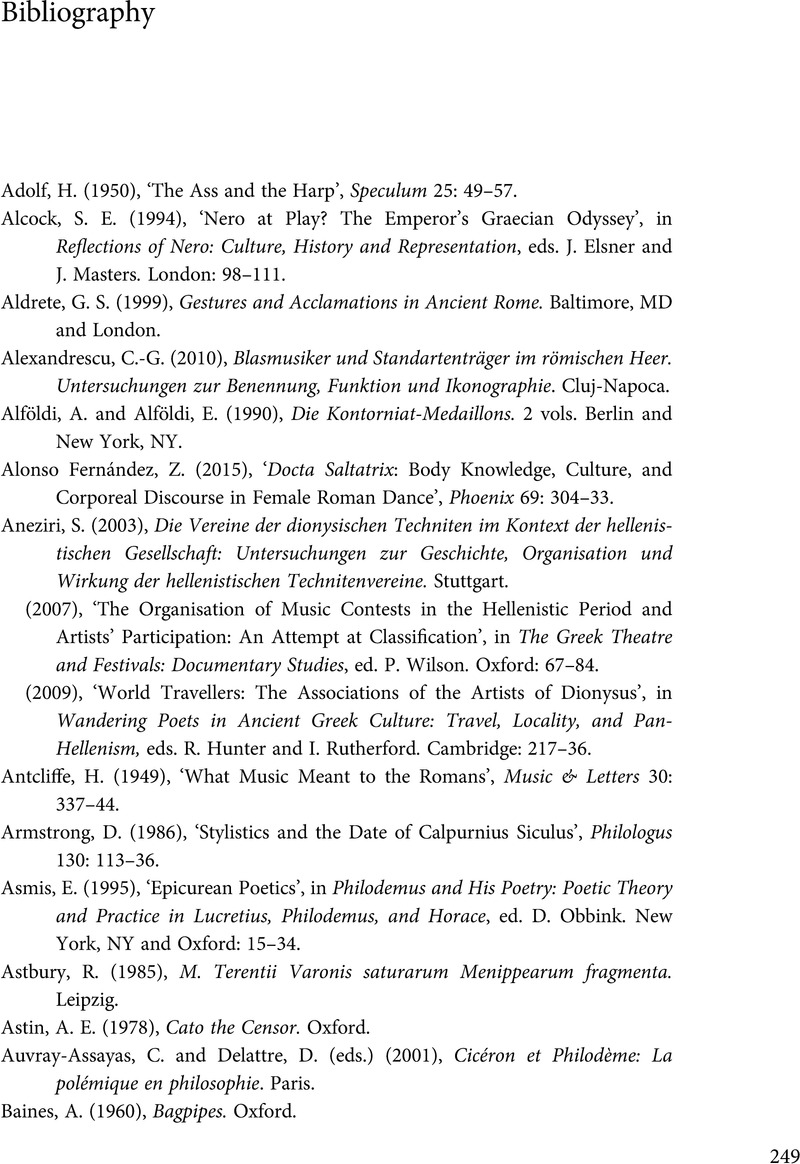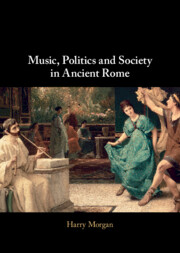Book contents
- Music, Politics and Society in Ancient Rome
- Music, Politics and Society in Ancient Rome
- Copyright page
- Contents
- Figures
- Acknowledgements
- Abbreviations
- Introduction
- 1 The Games of L. Anicius Gallus and the Cultural Politics of Music in the Second Century BCE
- 2 Popular Music and Popular Politics in the Late Republic
- 3 Augustus, Apollo’s Lyre and the Harmony of the Principate
- 4 Nero and the Age of Musomania
- Epilogue
- Bibliography
- Index
- References
Bibliography
Published online by Cambridge University Press: 24 November 2022
- Music, Politics and Society in Ancient Rome
- Music, Politics and Society in Ancient Rome
- Copyright page
- Contents
- Figures
- Acknowledgements
- Abbreviations
- Introduction
- 1 The Games of L. Anicius Gallus and the Cultural Politics of Music in the Second Century BCE
- 2 Popular Music and Popular Politics in the Late Republic
- 3 Augustus, Apollo’s Lyre and the Harmony of the Principate
- 4 Nero and the Age of Musomania
- Epilogue
- Bibliography
- Index
- References
Summary

- Type
- Chapter
- Information
- Music, Politics and Society in Ancient Rome , pp. 249 - 278Publisher: Cambridge University PressPrint publication year: 2022



